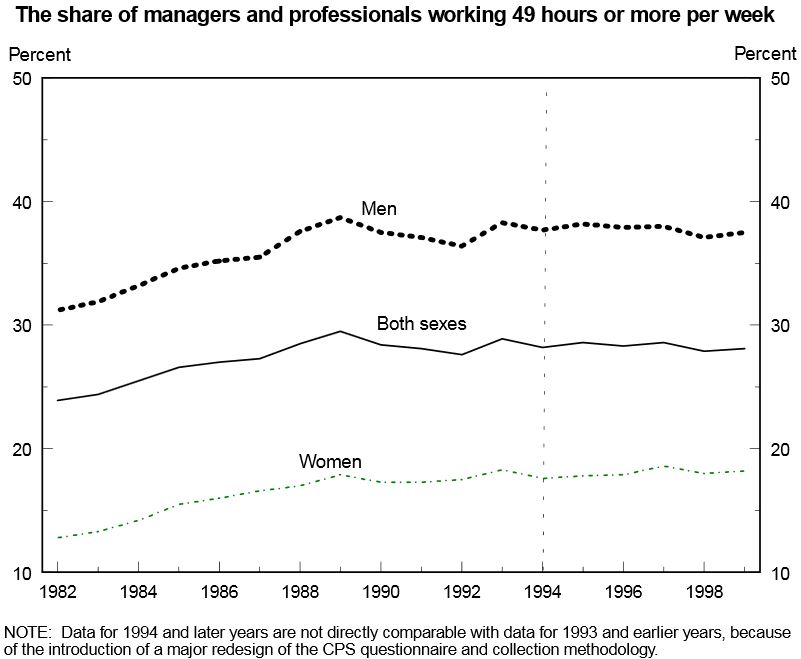What will jobs be like in the future? FastCompany asked me to write a short article that answered this question. My answer was simple: what is likely in store for a growing number of people are exceptionally long work days combined with exceptionally high pay. Many more people in the future will be bringing home fat paychecks, but rarely be home long enough to spend them.
In the FastCompany article I argued that work hours and pay would increase for highly skilled people. However, I did not have the space to provide detailed data to back up the assertions. Below I would like to show you three graphs that track the trends behind my prediction.
High Pay
When a company has either invested a lot of effort in training a worker or invested a lot of time in finding a worker with the correct skills, they don’t want to have them leave. A simple way to prevent labor turnover is to ensure a worker is paid more money than other companies are offering.
The facts are straightforward; pay has gone up over time for highly skilled people. Below is a graph of an index of total compensation (wages plus benefits) for private sector managerial and professional jobs from the Bureau of Labor Statistics.
The graph contains an index where the year 2002 is set equal to 100. The index shows if a person made $100,000 in 2002, how much they should have been compensated each year since 2002 to keep up with the average worker in the group. For example, a person making $100,00 in 2002 should have been given pay and benefits of $110,000 in 2005.
The graph shows total compensation has dramatically risen over time. Inflation has increased too. However, from 2002 to 2015 total compensation has increased about 40% while inflation has increased only about 30%. This means that even after adjusting for inflation managers and professionals are being given more compensation.
More Hours
Companies want to increase hours in an effort to boost their profits. For every two jobs that are combined the company’s bottom line is boosted by the amount the company would have spent on vacation, health, dental, life insurance, Social Security taxes and space for each employee.
The Bureau did a short, but interesting, research report in 2000 that tracked the percentage of managers and professionals who worked 49 hours or more per week. The key graph is reproduced below and shows an increase in the 1980s and early 1990s and then a flattening out at the end of the 1990s.
What has happened since 2000? The Bureau now provides indexes that track the number of hours worked by various industries. One industry it started tracking in 2006 is “professional and business services.” While not perfectly compatible with the occupation of managers and professionals, since some people in the industry might be low skill help, it is a pretty good approximation for changes in hours among those with high skill.
 The graph shows that hours were climbing until the recession of 2008. After the end of the recession in 2009, hours resumed their steady climb upward. From the worst of the recession until today, hours worked are up by almost twenty-five percent among people working in professional and business services.
The graph shows that hours were climbing until the recession of 2008. After the end of the recession in 2009, hours resumed their steady climb upward. From the worst of the recession until today, hours worked are up by almost twenty-five percent among people working in professional and business services.
No one knows the future, least of all economists. However, the data trends suggest to me the future for many high skill people is one where they are chained to their desks with golden handcuffs.

